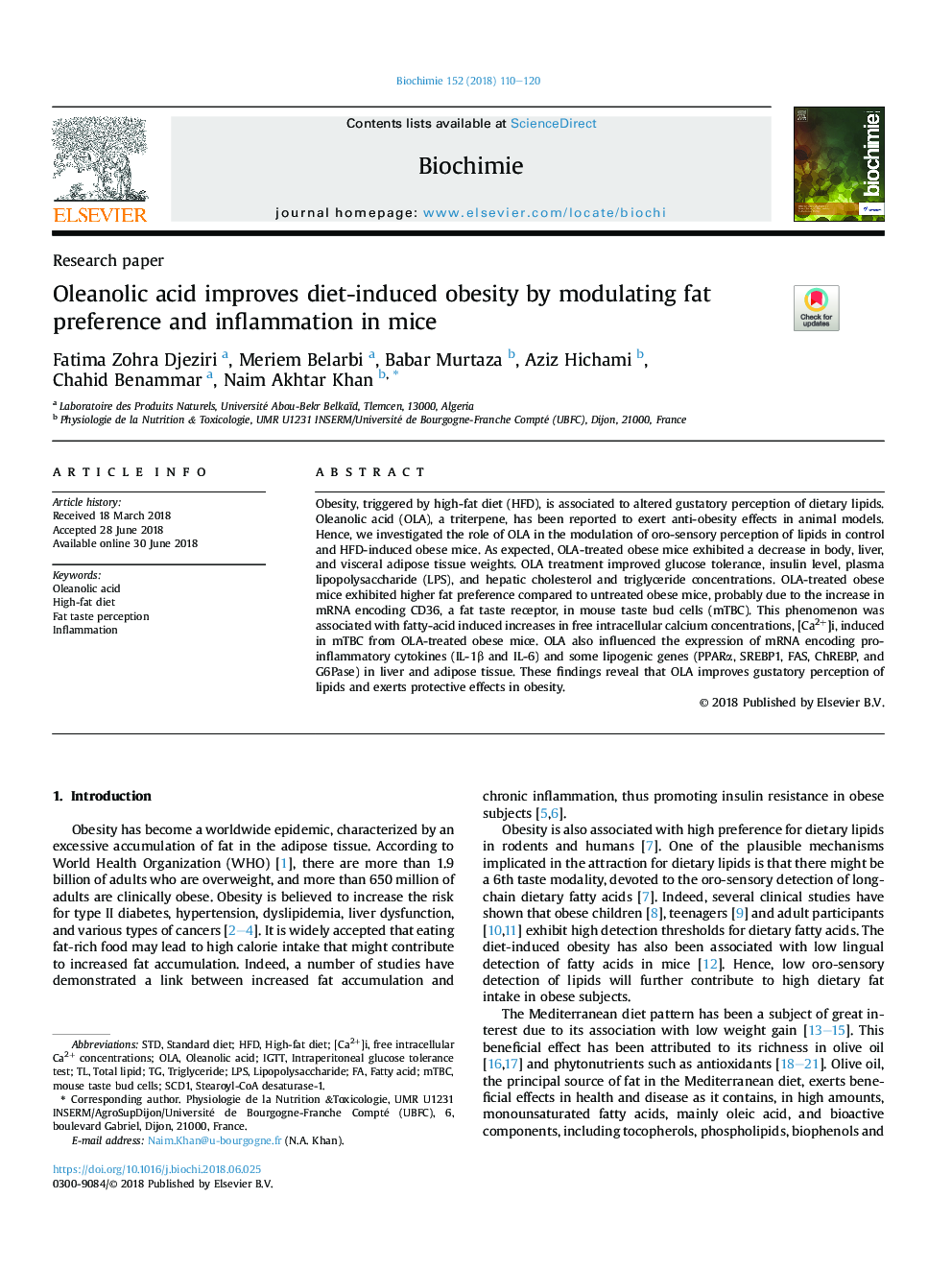| کد مقاله | کد نشریه | سال انتشار | مقاله انگلیسی | نسخه تمام متن |
|---|---|---|---|---|
| 8304115 | 1538380 | 2018 | 11 صفحه PDF | دانلود رایگان |
عنوان انگلیسی مقاله ISI
Oleanolic acid improves diet-induced obesity by modulating fat preference and inflammation in mice
ترجمه فارسی عنوان
اسید اولئانوولی باعث افزایش چاقی ناشی از رژیم غذایی با تنظیم ترجیح چربی و التهاب در موش می شود
دانلود مقاله + سفارش ترجمه
دانلود مقاله ISI انگلیسی
رایگان برای ایرانیان
کلمات کلیدی
IGTTMTBCstearoyl-CoA desaturase-1SCD1LPSSTDHFD[Ca2+]i - [Ca2 +] iintraperitoneal glucose tolerance test - آزمون تحمل گلوکز داخل صفاقیOleanolic acid - اسید اولانیولیکFatty acid - اسید چربinflammation - التهاب( توروم) triglyceride - تریگلیسریدstandard diet - رژیم استانداردhigh-fat diet - رژیم غذایی با چربی بالاlipopolysaccharide - لیپوپلی ساکاریدOLA - همه چیزTotal lipid - کل لیپید
موضوعات مرتبط
علوم زیستی و بیوفناوری
بیوشیمی، ژنتیک و زیست شناسی مولکولی
زیست شیمی
چکیده انگلیسی
Obesity, triggered by high-fat diet (HFD), is associated to altered gustatory perception of dietary lipids. Oleanolic acid (OLA), a triterpene, has been reported to exert anti-obesity effects in animal models. Hence, we investigated the role of OLA in the modulation of oro-sensory perception of lipids in control and HFD-induced obese mice. As expected, OLA-treated obese mice exhibited a decrease in body, liver, and visceral adipose tissue weights. OLA treatment improved glucose tolerance, insulin level, plasma lipopolysaccharide (LPS), and hepatic cholesterol and triglyceride concentrations. OLA-treated obese mice exhibited higher fat preference compared to untreated obese mice, probably due to the increase in mRNA encoding CD36, a fat taste receptor, in mouse taste bud cells (mTBC). This phenomenon was associated with fatty-acid induced increases in free intracellular calcium concentrations, [Ca2+]i, induced in mTBC from OLA-treated obese mice. OLA also influenced the expression of mRNA encoding pro-inflammatory cytokines (IL-1β and IL-6) and some lipogenic genes (PPARα, SREBP1, FAS, ChREBP, and G6Pase) in liver and adipose tissue. These findings reveal that OLA improves gustatory perception of lipids and exerts protective effects in obesity.
ناشر
Database: Elsevier - ScienceDirect (ساینس دایرکت)
Journal: Biochimie - Volume 152, September 2018, Pages 110-120
Journal: Biochimie - Volume 152, September 2018, Pages 110-120
نویسندگان
Fatima Zohra Djeziri, Meriem Belarbi, Babar Murtaza, Aziz Hichami, Chahid Benammar, Naim Akhtar Khan,
